Related Tags
“I did it the hard way”: Chris Kroenlein of K-Line Guitars on learning to build by trial and error
Meet the head honcho of K-Line, a small company that does it all so right and knows how to deliver where it counts.
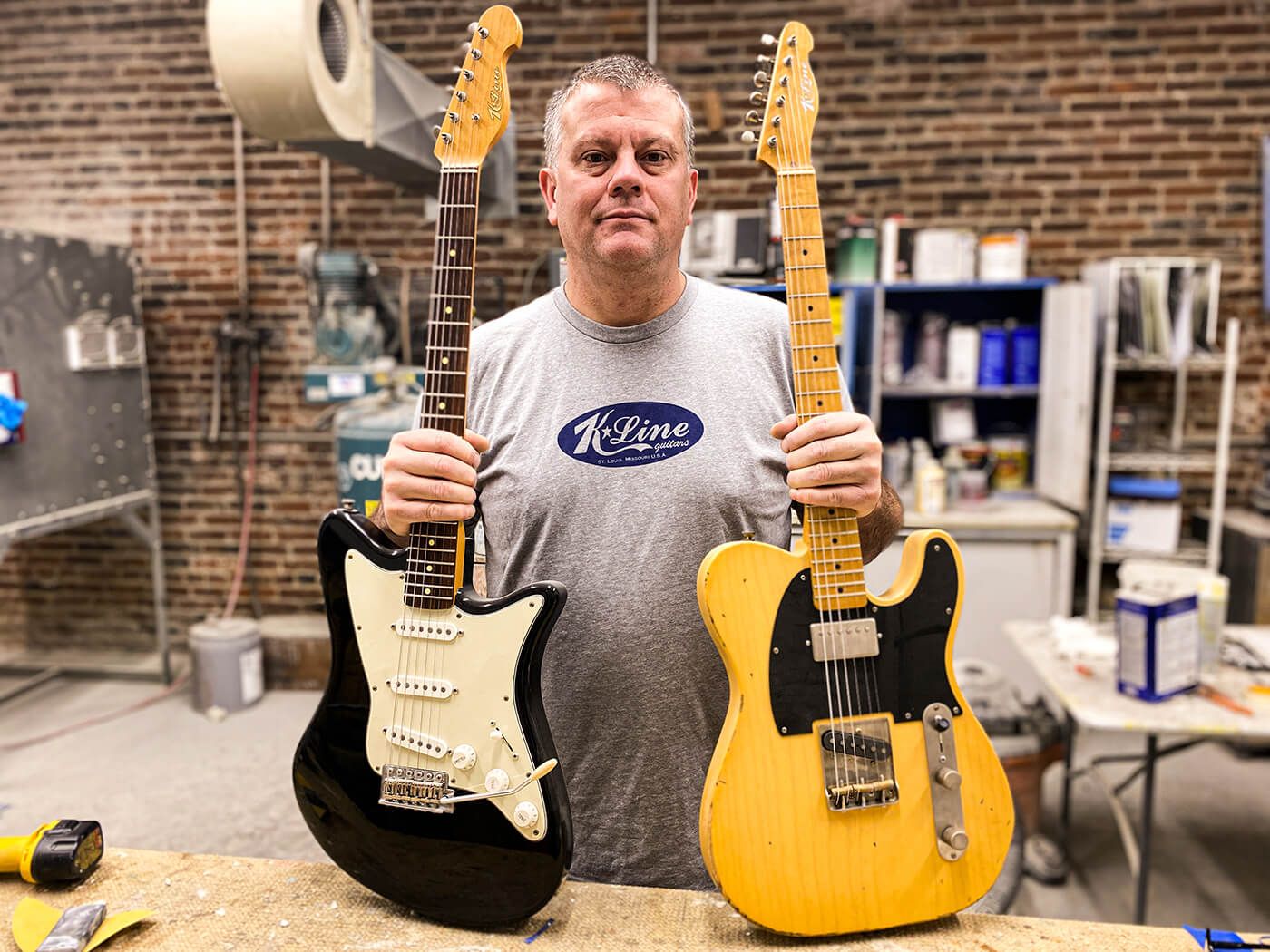
All images: Jacob Kroenlein
It’s perpetually fascinating how many guitar, amp and pedal makers have become successful with no formal training in the craft. Sure, a proper education in any pursuit usually pays off, but it’s also worth noting that passion, curiosity, and an apparently innate knack for figuring out how things work can yield surprisingly effective results.
That’s how it was with Leo Fender, a hobby-level tinkerer in electronics with a two-year junior college diploma in bookkeeping who went on to found the world’s most famous guitar and amplifier company. And so it is with Chris Kroenlein, who founded K-Line guitars on the back of zero formal training in luthiery, but with an inherited mechanical nous, and a passion for digging into what makes these obsession-inspiring instruments tick.
I first encountered K-Line guitars in the mid 2010s when a friend put into my hands a Strat-like Springfield model that Kroenlein had built for him. It played beautifully, was made from light and extremely resonant woods, wore an immaculate nitro finish and flawlessly dressed frets, and sounded outstanding plugged in – and was acquired two or three years earlier, I was told, at about half the entry price of a new Fender Custom Shop guitar with similar appointments.
Word of K-Line’s quality and value has spread in the guitar world these past five years or so, and Kroenlein’s own reputation as a maker has been justifiably elevated. Unsurprisingly, his prices have gone up a bit too, but his guitars still represent stunning value for hand-made electrics that are created start to finish by one man in a small shop in St. Louis, Missouri. All signs point to Kroenlein rising to the next level in this arena, too – up there with Grosh, Lentz, Tom Anderson and the like – although many current owners of his recent creations will tell you he’s already there, and it’s hard to argue.
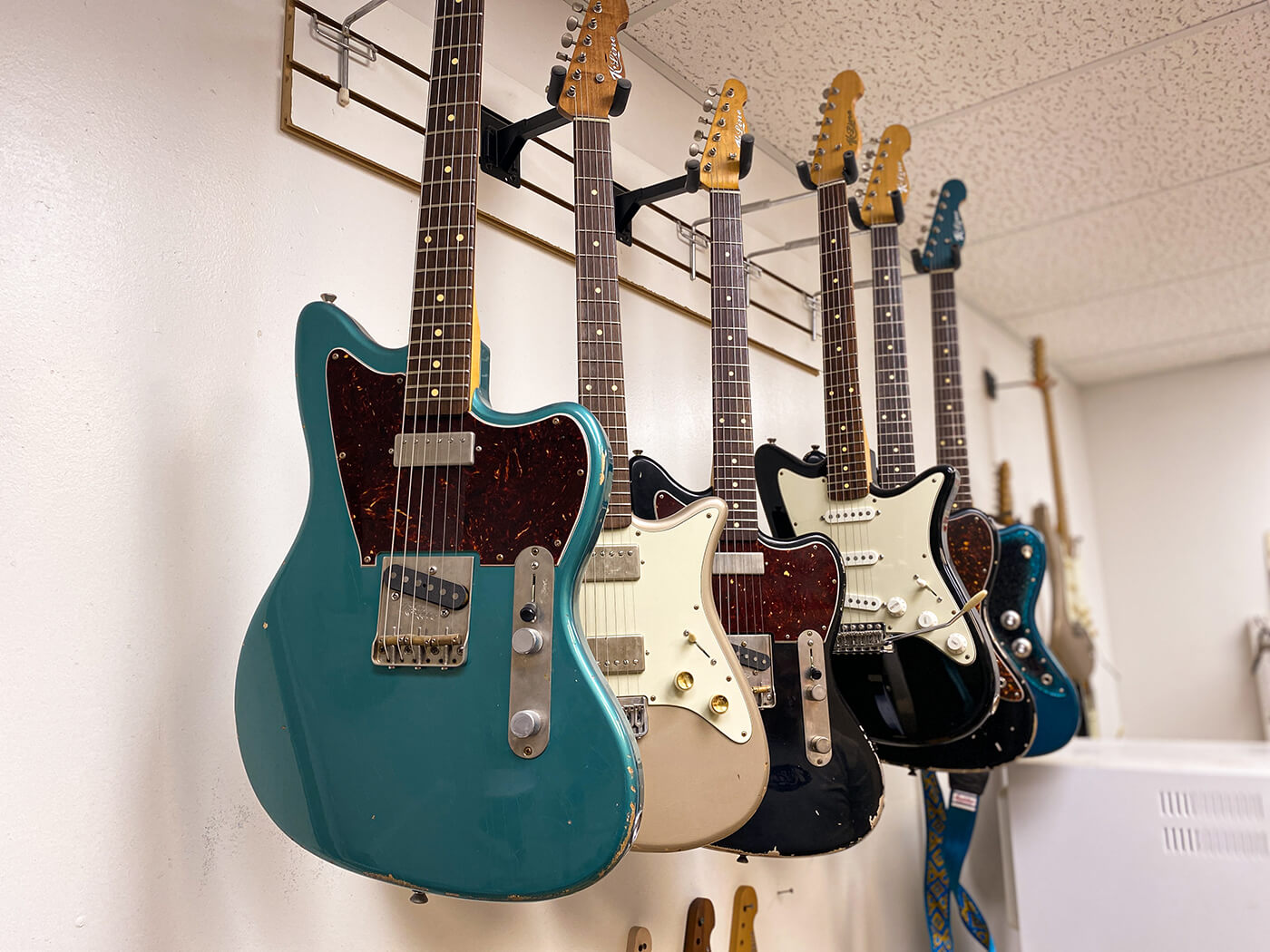
Wood cutting
“Growing up as a kid in Saint Louis,” Kroenlein says, “I began playing guitar when I was about 10 years old. My pop had an auto body and mechanic shop right next door to our house. I loved to play but also was a curious kid and always loved to find out how things worked, so I spent more time breaking down guitars than playing. I had no formal training. I did it the hard way, by trial and error. My dad taught me about mechanics and painting, as I was a barfly in the shop as a kid. I worked for him through high school and during breaks in college. So, I suppose some things came more natural to me.”
Like many in the ‘tear it down to see how it ticks’ camp, Kroenlein eventually began putting the things together for himself, from the raw parts. Upon heading to college in the early 90s (where he earned a BA in economics) this proved a better means of acquiring satisfactory guitars for his own playing than any off-the-shelf options he could actually afford to purchase.
“I would buy necks and bodies and experiment with different combos until I found what worked best together,” he recalls. “Other guitarists around always commented on my guitars and how they played, so they asked me to do the same for them. Fast forward again to 1996 and starting a career out of school, with some money in my pocket, I would buy bodies and necks and build partscasters. Initially, I used third-party cutters for the wood and began building K-Line parts guitars.”
As he fed this demand from local players, Kroenlein made his ‘part-time hobby business’ official with the founding of the K-Line company. A few years into that, he pushed his skillset further, hewing the foundations of his guitars from the tree up.
“By 2009 I was without a day job, and hungry to make it a go,” says Kroenlein, “so I invested in CNC machinery. With the help of others, I began making bodies first and then necks. By 2011 we were 95 per cent in-house made. I was always a student, picking up knowledge from wherever and whomever I could.”
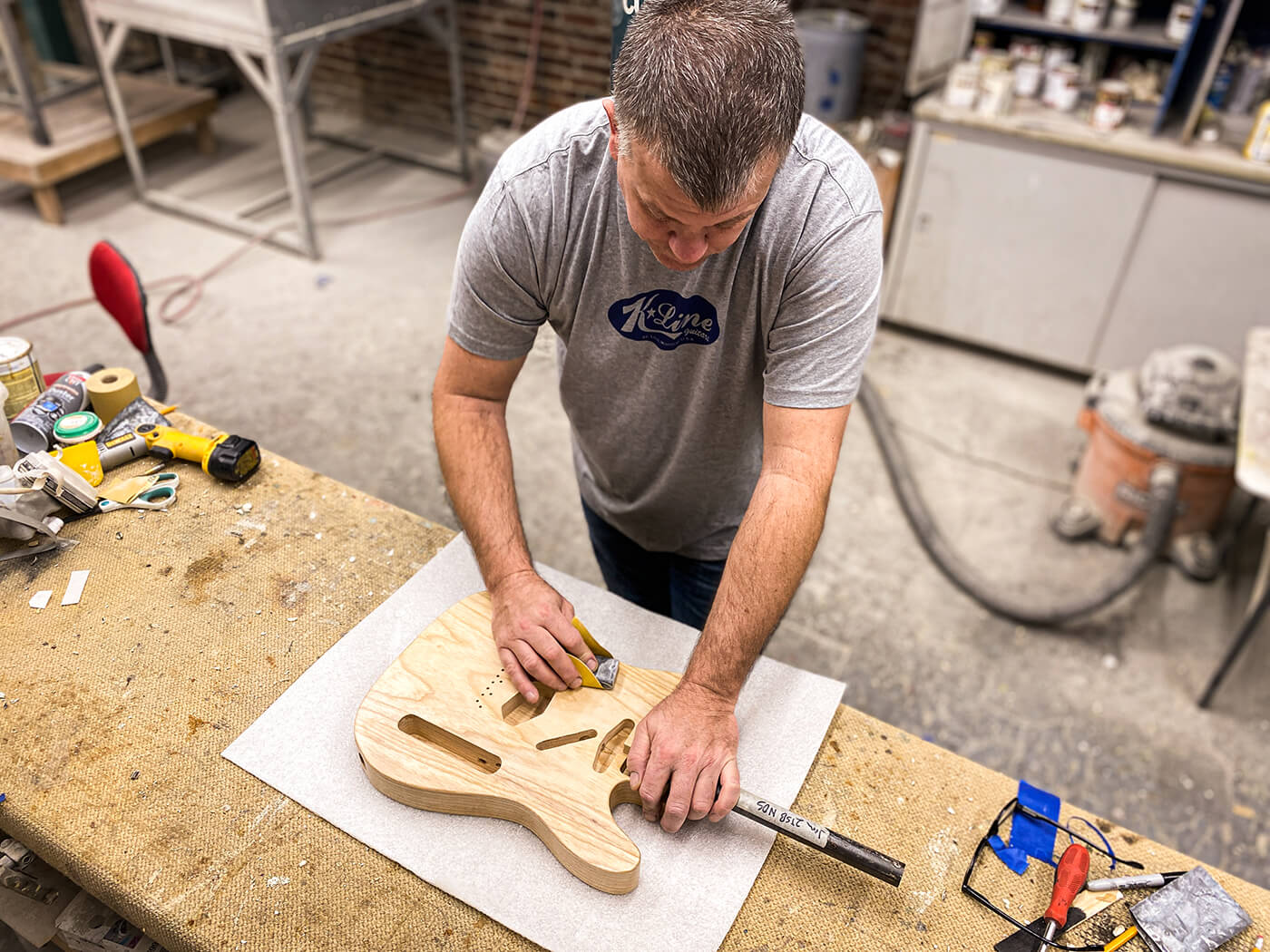
A better set of tyres
That K-Line guitars fall largely into the archetypal F-inspired bolt-neck camp, their maker tells us, comes largely down to one thing: “Honestly, Eric Clapton. I was a fan, and my first guitar was a Blackie Strat. I love single coils.”
For a budding guitar maker, at that time, the format also made for a somewhat easier ramping-up into production.
“Parts were easier to get,” Kroenlein says. “And when big companies decided not to listen to the players, it opened the door for many of us to… not reinvent the wheel, but to put a better set of tyres on it. I stayed away from the set necks until much later when in 2015 I did a run of Specials and Juniors. I realised quickly that the [profit margin] was much less and the competition was greater. ‘G’ guys are not as accepting of different headstock designs either. So, I discontinued them in 2018.”
Having evolved several years ago from assembling partscasters to manufacturing most foundational components in-house, Kroenlein says he has also learned a lot of things that have helped elevate him out of the ‘assembler’ category and into the realm of true guitar builders, and prime among these is wood selection. Asked the difference between a good and a great guitar, he replies without hesitation:
“Wood. Specifically, dry, resonant wood. I hand-select my wood based on moisture content, and I spend a bit extra to get the driest wood possible. After that, quality hardware matters a lot. More specifically, hardware that performs as needed but also provides the sound needed. It is not about price, as I have found. Often times the lesser quality of steel in certain parts produces the desired outcome in tone.
“Today’s world is full of forums and information where many people are armchair pros of all things guitar. Some of these people equate, say, a bridge that costs $200 being the best bridge out there. A great example is with a very popular brand bridge for S-style guitars: great workmanship, they look great, but they can make my guitars too bright and harsh.”
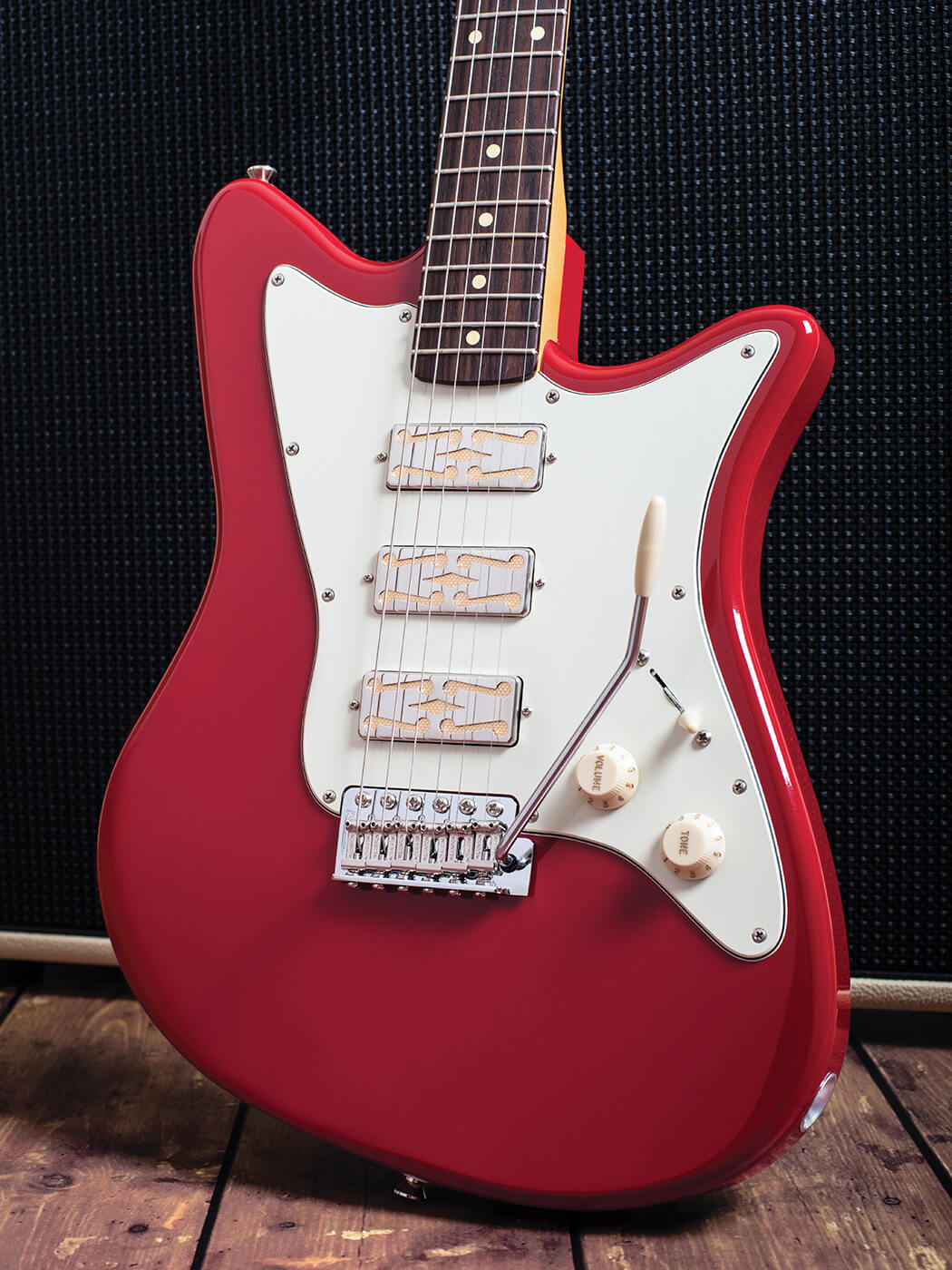
Never settle for just ‘OK’
Materials aside, Kroenlein displays a lot of thought for the little hand-applied details that will often help to take a guitar from ‘maybe’ to ‘yes!’ As players, we all know them when we feel them, but they are all too often missing from guitars that are otherwise of quite good quality, and for which we might have paid a tidy sum.
“I think it’s important to pay attention to the fit and finish and the little things,” he says. “Like a nice hand-rolled fretboard edge, saddle screws not sticking out of the saddle too much, proper neck-pocket angles to ease set-up and feel. My general principle is, never settle for just OK. Always strive for only the best quality you can deliver. As a small company, you must make sure that nothing leaves the shop unless it meets standards set forth. I make them like I like them.”
A big part of that principle, too, involves Kroenlein’s attitude both before and after the sale – what we generally refer to simply as ‘customer service.’
“I am asking people to send me, quite frankly, a lot of money. I like to make myself available to chat with them to ensure that we are on the same page the entire way through the process. I’m not a fan of lots of emails when a nice 30-minute phone conversation can take care of any questions.”
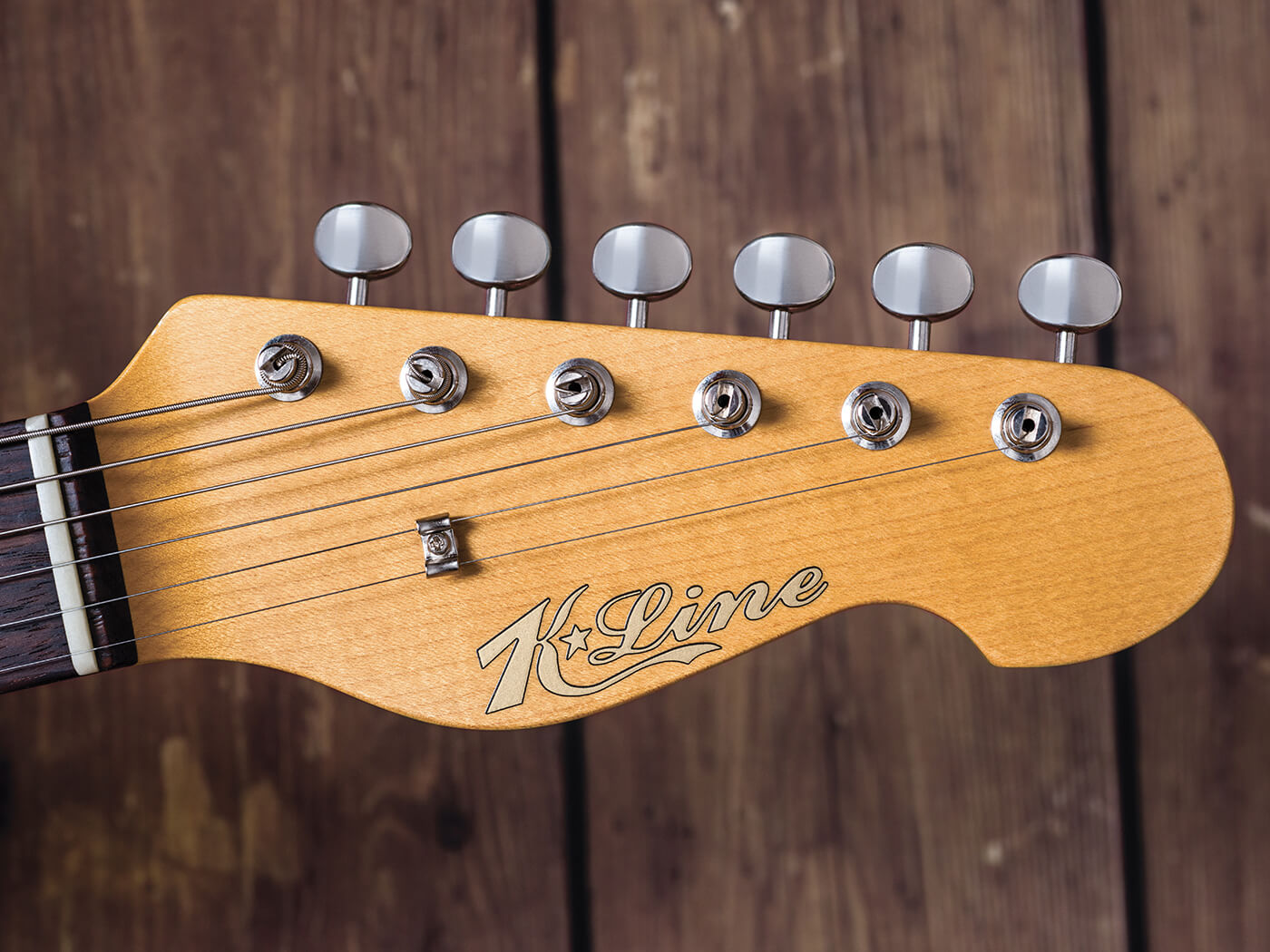
Part of this quest for the best led Kroenlein, after several years of selecting his pickups from among the popular high-end makers on the market, to learning to wind his own. The upside of the effort proved two-fold: there’s now another major K-Line component made entirely in-house, and the practice eliminates a significant part of the sonic stew that was dependent on the work of others.
“I actually started making pickups about eight or nine years ago, developing the process when I had the time,” he says. “I tried many different wind patterns and materials, both traditional and non-traditional, trying to gain the ‘it’ factor. Let me say that I was not disappointed in the options already available, but I was unable to truly have control beyond off-the-shelf pickups. Having the ability to go back on the winder and alter a pickup slightly to get the exact sound is priceless.
“Another aspect is pride. I officially launched the pickup line at NAMM 2018 after a long journey of trial and error. The real hard part is not chasing tone down a rabbit hole. Find your materials, find your wind technique, and repeat. Consistency is always the key. And finally, money. We as small builders make a very humble living off of guitars. Any little amount of cost that can be saved by doing the work yourself helps the bottom line. So, when you can be truly proud to call them your own and save some cash, I call that winning.”
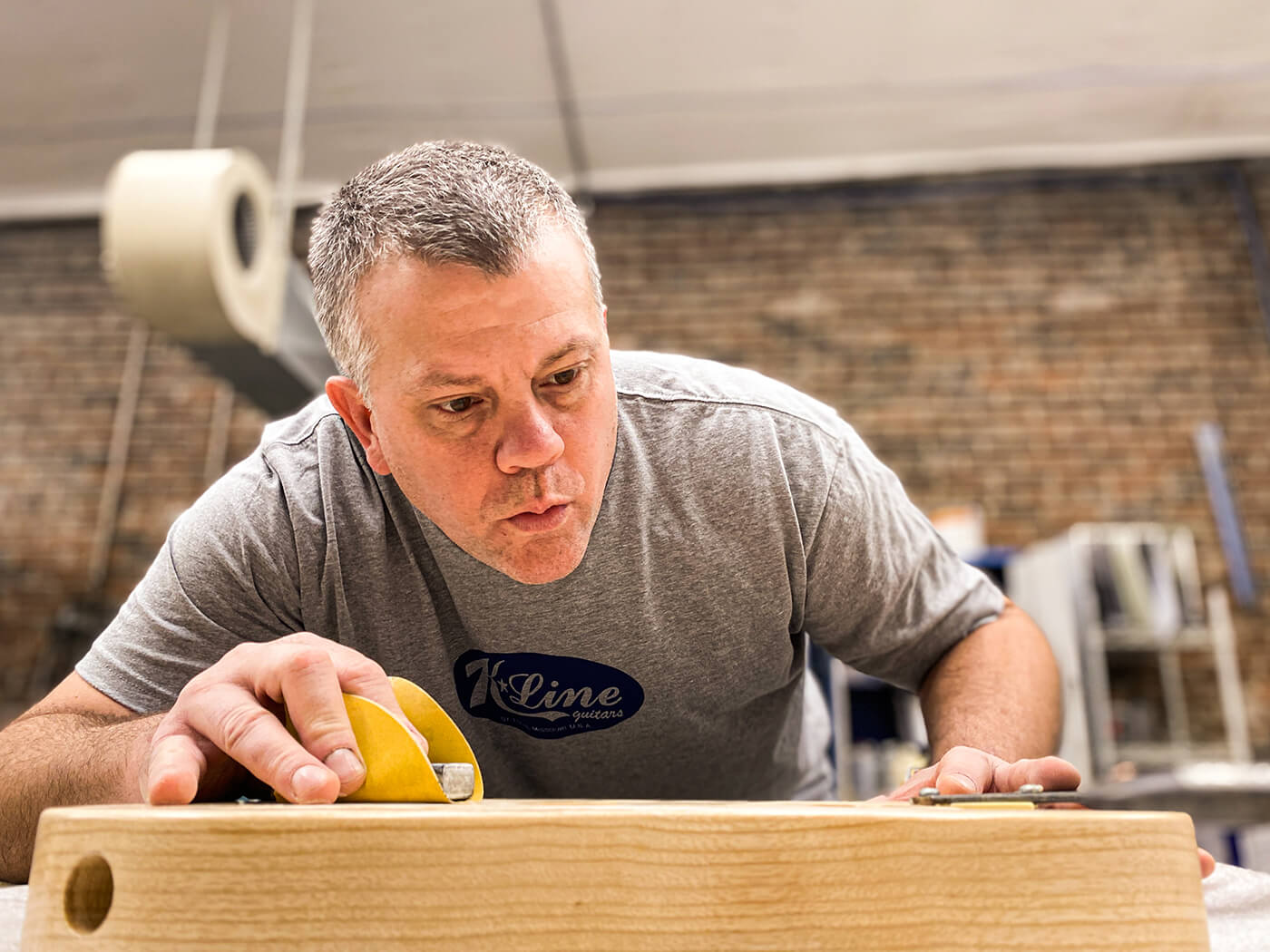
Start to finish
Coming at the venture as a self-taught luthier, Kroenlein obviously had to develop certain skills that weren’t entirely empirical, and which didn’t flow naturally from his experience working after school in his dad’s car repair business. Fine skills such as fret and nut work, for example, required some practice.
“I am a bit different, as I did not start out as a repair guy or go to any specific schooling except the school of hard knocks. Without any formal training,” he says, “I had to perfect the craft through trial and error and lots of reading.”
Quality finish work, on the other hand, came quite naturally, after years of using similar spray techniques in the body shop. Go in search of user reviews of K-Line guitars, and among other plaudits you’ll find a slew of glowing comments on the quality of Kroenlein’s nitrocellulose finishes. Noting this, and making an observation that he seems to also be doing more aged and play-worn finishes lately, he corrects: “Actually, the business started as all-relic. Then there was a huge demand for the quality finish, so I offered up the new finishes as well.
“The relic trend ebbs and flows. Right now, it is hot again for some reason. I am one of the few companies that offer both, as well as an in-between option. Sort of like putting a new guitar under a bed for 50 years and never playing it. A bit of patina but in perfect shape. Trial and error is ongoing. Every day it seems that I wonder about a new way to do something, like my recent addition of the French polish neck-back for relics. I have seen so many real vintage guitars and have endless pictures to use to emulate natural wear, but if you go all natural then they are not always desired, so you have to embellish a little.”
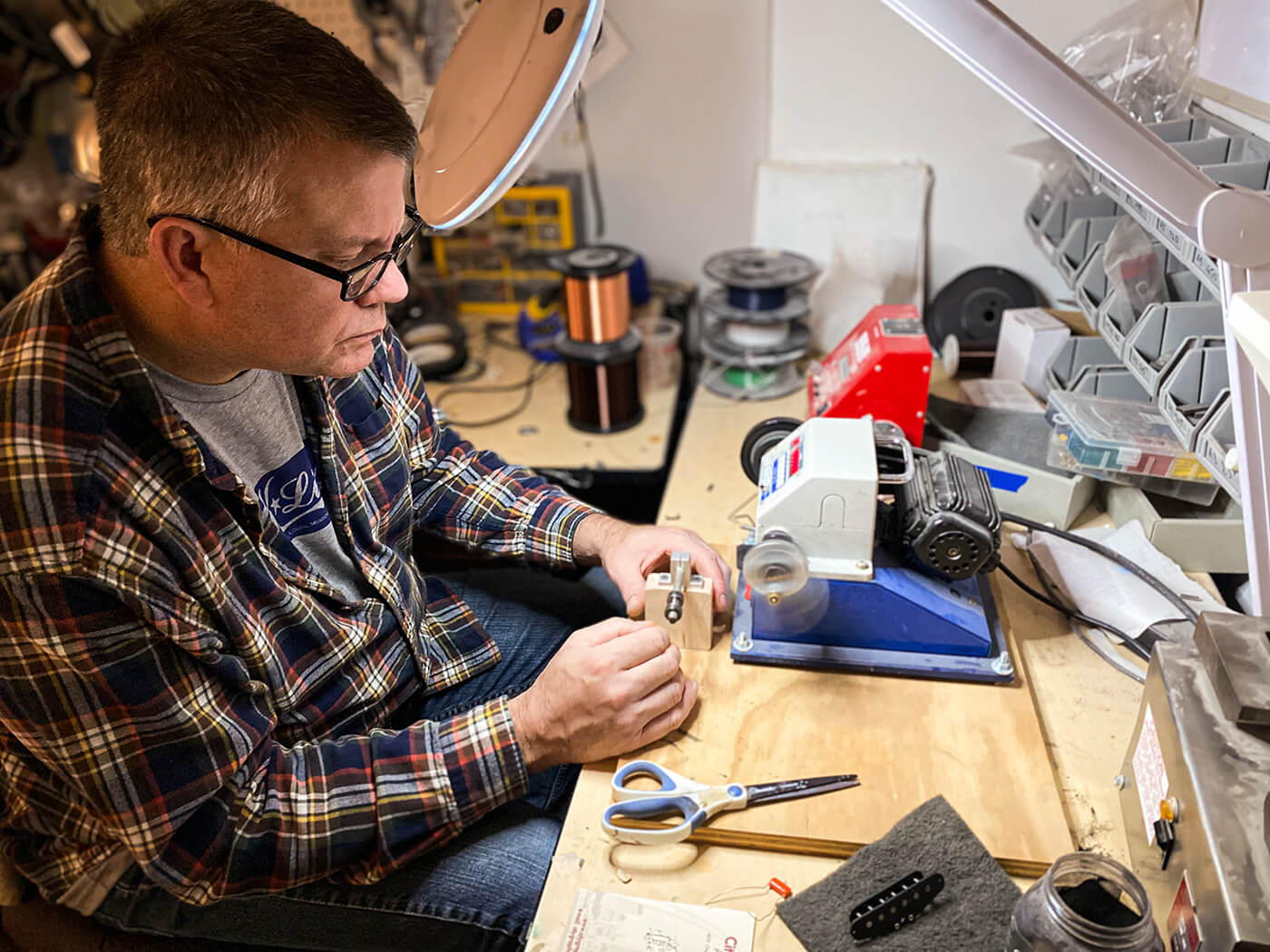
One builder after another has commented that guitarists tend to be a conservative lot on the whole, hence to propensity to stick to the tried-and-tested shapes: put simply, familiar sells. Playing by those rules has benefited K-Line’s efforts in the marketplace too, the brand’s S-style Springfield and the T-style Truxton easily proving its best sellers, with J-style offset-waist San Bernardino, offset-meets-Tele Texola, and Jazz Bass-inspired Bass following behind.
There’s one other in the lineup, though, that is closer to Kroenlein’s heart, and which ticks the right boxes for a creative new design that still presents enough familiarity to make it easy to pick up: the Del Mar.
“I always wanted to do a smaller offset guitar that would also be a very adaptable platform,” says Kroenlein. “I can make them a hardtail or a trem version. I can use just about any sort of pickup combinations as well. Customers also indicated they wanted something outside the everyday options… Well, that is until you build one. But it is a fun guitar. I play one with Strat pickups in it and love the looks I get. Different is fun!”
Ultimately, though, Kroenlein’s mission is to serve the client, and the attitude has served K-Line well, as the name ascends the ranks of high-quality, US-made electric guitars.
“There are a lot of options in the world of guitars,” he concludes. “I, of course, would love for everyone to buy a K-Line, but I also know that is not real life. Whatever you do, support the small builders. The money they make goes directly to pay for soccer fees and band lessons for their kids, or braces or a nice night out with the family, so thanks to all for the support!”
Visit k-lineguitars.com for more.
